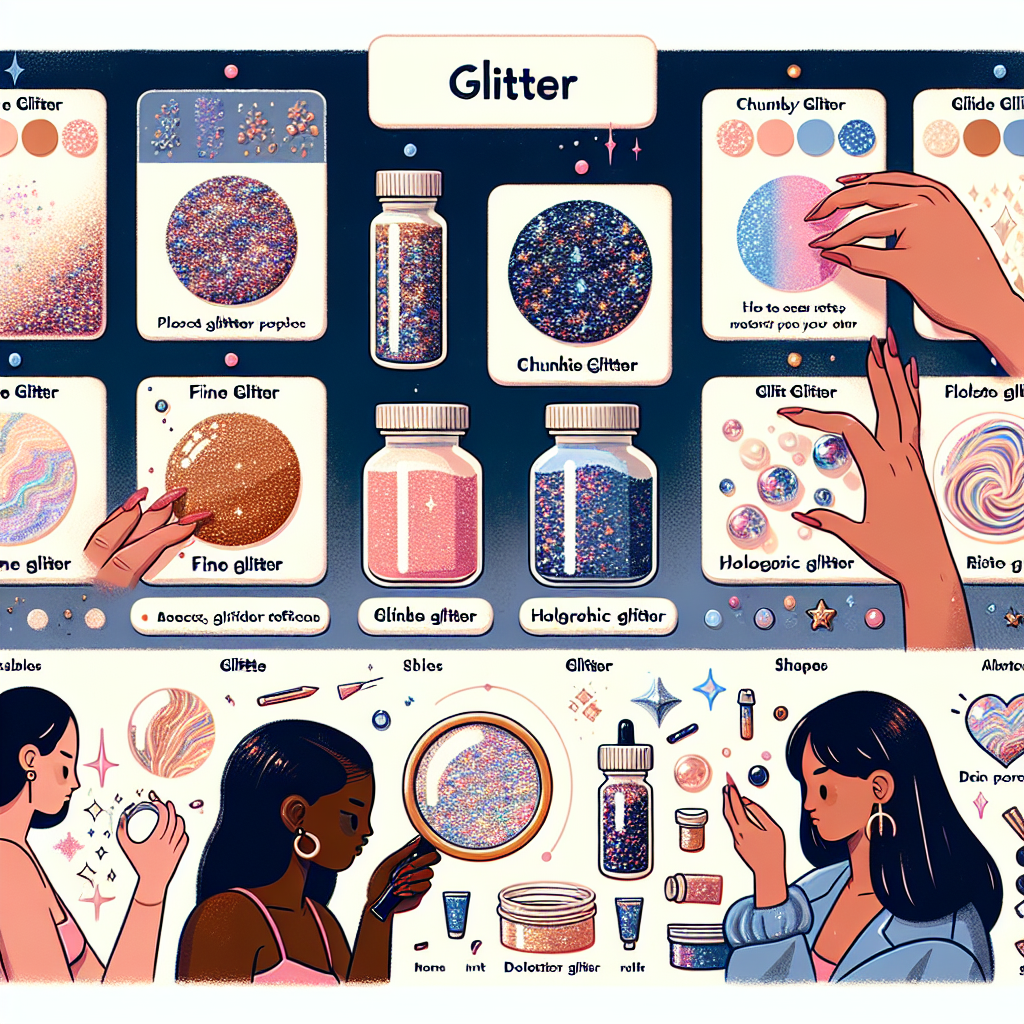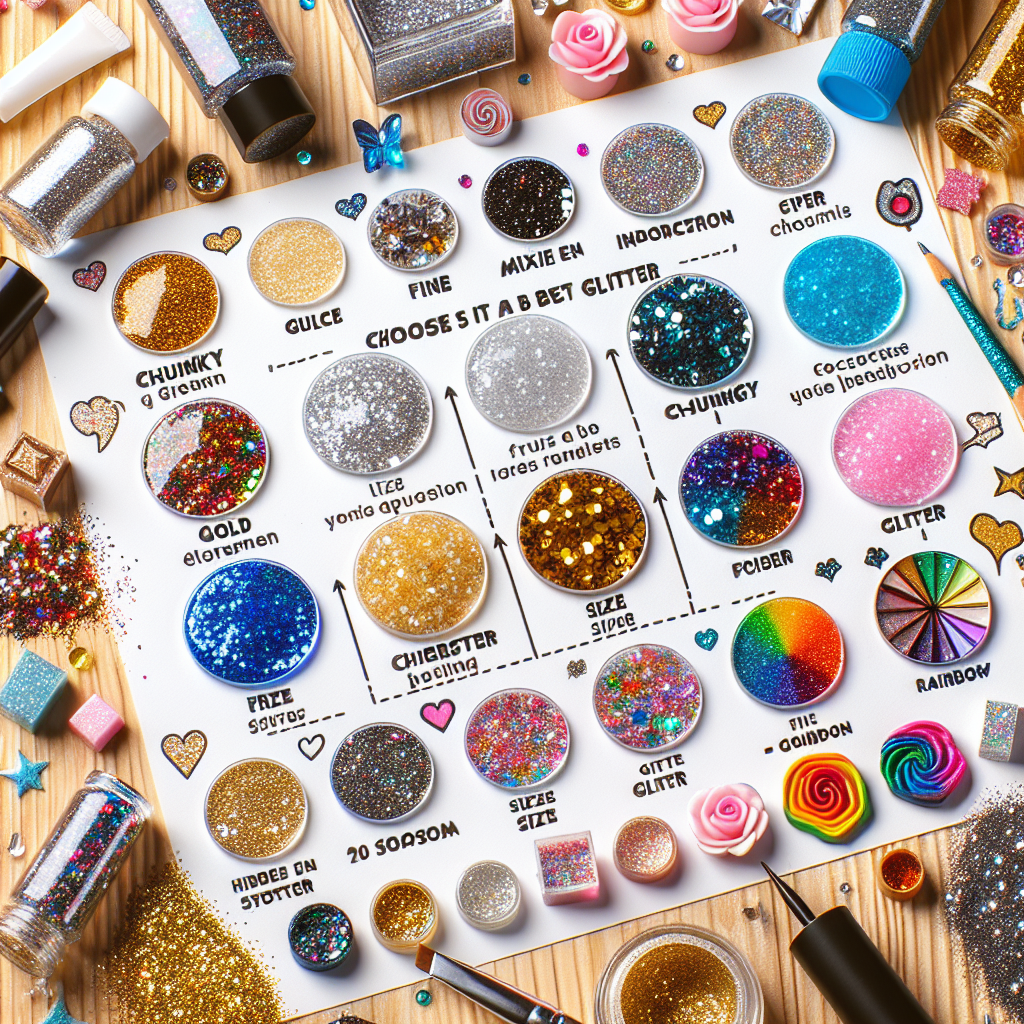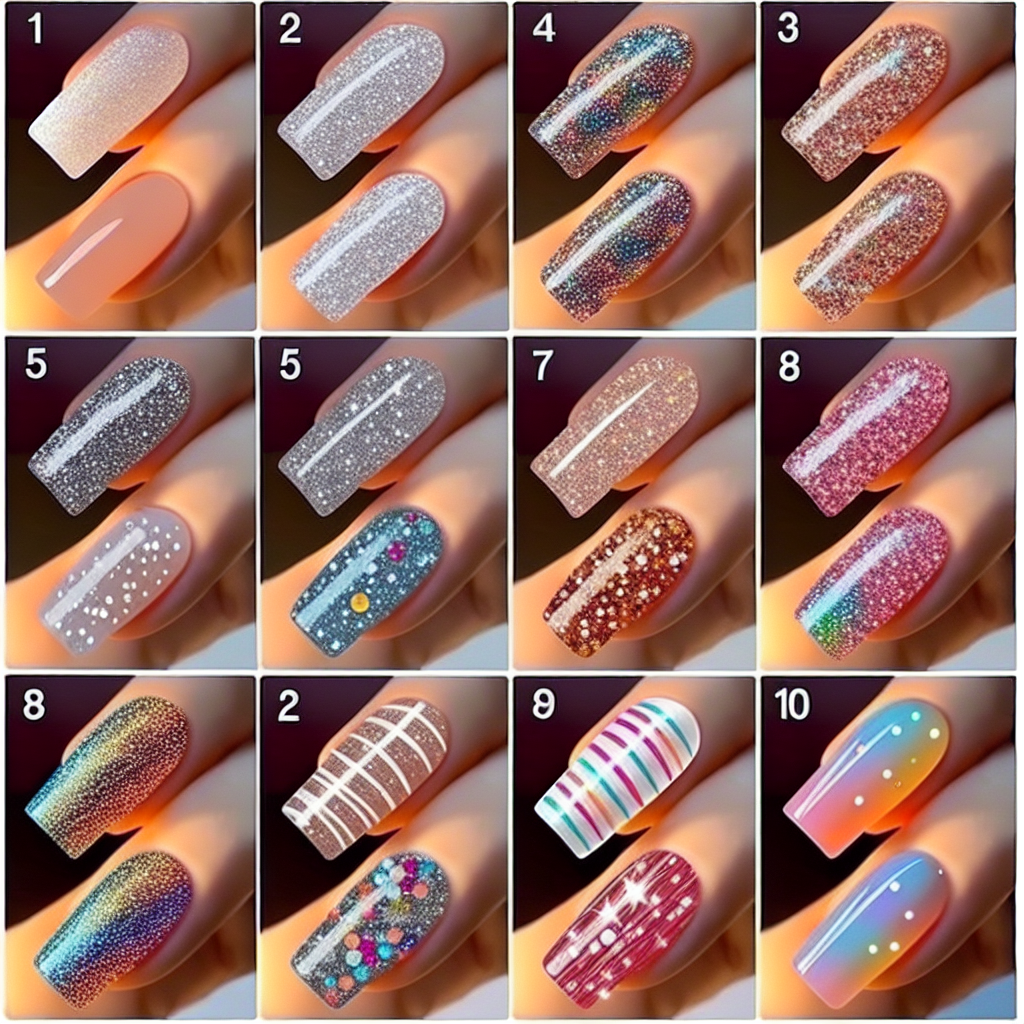-
Table of Contents
“Sparkle Smart: Your Guide to Choosing the Perfect Glitter for Resin Creations!”
When embarking on resin projects, selecting the right glitter is crucial for achieving the desired aesthetic and ensuring compatibility with the resin. The variety of glitters available can be overwhelming, with options ranging from fine to chunky, holographic to metallic. Understanding the characteristics of different glitters, such as their size, color, and material, is essential for enhancing the visual appeal of your creations. Additionally, considering factors like the resin type, curing process, and intended use of the finished piece will help you make an informed choice. This guide will provide key insights and tips on how to choose the best glitter for your resin projects, ensuring stunning results every time.
Types of Glitter: Understanding Different Varieties
When embarking on resin projects, one of the most captivating elements to consider is glitter, which can significantly enhance the visual appeal of the final product. However, not all glitter is created equal, and understanding the different varieties available is crucial for achieving the desired effect. To begin with, glitter can be categorized based on its material composition, size, and finish, each of which plays a vital role in the overall aesthetic of the resin piece.
One of the primary types of glitter is plastic glitter, which is widely used due to its affordability and availability in a vast array of colors and sizes. This type of glitter is often made from polyethylene terephthalate (PET) and is known for its vibrant hues and reflective qualities. However, it is essential to note that plastic glitter may not be suitable for all projects, particularly those intended for outdoor use, as it can degrade over time when exposed to UV light. Therefore, while plastic glitter can provide a dazzling effect in indoor projects, it may be prudent to consider alternatives for items that will face the elements.
In contrast, biodegradable glitter has gained popularity in recent years as a more environmentally friendly option. Made from plant-based materials such as cellulose, this type of glitter offers a similar aesthetic to its plastic counterpart while being less harmful to the environment. As consumers become increasingly conscious of their ecological footprint, biodegradable glitter presents an appealing choice for those looking to create beautiful resin pieces without contributing to plastic pollution. However, it is important to ensure that the biodegradable glitter is compatible with resin, as some formulations may not adhere well or could affect the curing process.
Another significant factor to consider when selecting glitter for resin projects is the size of the particles. Glitter typically comes in various sizes, ranging from ultra-fine to chunky. Ultra-fine glitter can create a smooth, shimmering effect, making it ideal for projects where a subtle sparkle is desired. On the other hand, chunky glitter can add depth and dimension, creating a more dramatic appearance. When choosing the size of glitter, it is essential to consider the overall design and the effect you wish to achieve. For instance, a combination of different sizes can create a visually interesting contrast, enhancing the complexity of the piece.
Furthermore, the finish of the glitter is another critical aspect to consider. Glitter can be classified into several finishes, including holographic, metallic, and matte. Holographic glitter reflects light in a spectrum of colors, adding a dynamic quality to the resin piece. Metallic glitter, characterized by its shiny, reflective surface, can impart a luxurious feel, while matte glitter offers a more subdued, elegant appearance. The choice of finish will ultimately depend on the desired outcome and the overall theme of the project.
In conclusion, selecting the best glitter for resin projects involves a careful consideration of various factors, including material composition, particle size, and finish. By understanding the different types of glitter available, creators can make informed decisions that align with their artistic vision and project requirements. Whether opting for traditional plastic glitter, eco-friendly biodegradable options, or experimenting with various sizes and finishes, the right choice of glitter can elevate a resin project from ordinary to extraordinary, ensuring that the final piece is not only visually stunning but also reflective of the creator’s intent.
Color Selection: Choosing the Right Shades for Your Project
When embarking on resin projects, one of the most crucial decisions involves selecting the right glitter colors to enhance the overall aesthetic. The color selection process is not merely a matter of personal preference; it requires careful consideration of the project’s theme, the intended mood, and the final application of the piece. To begin with, understanding the color wheel can significantly aid in making informed choices. Complementary colors, which are located opposite each other on the wheel, can create striking contrasts that draw attention, while analogous colors, found next to each other, can produce a harmonious and cohesive look.
Moreover, the context of the project plays a pivotal role in color selection. For instance, if the resin piece is intended for a festive occasion, vibrant and bold colors such as bright reds, greens, or golds may be appropriate to evoke a sense of celebration. Conversely, for projects aimed at creating a calming atmosphere, softer hues like pastels or muted tones can be more suitable. This consideration of context extends beyond mere aesthetics; it also encompasses the emotional response that colors can elicit. Research has shown that colors can influence mood and perception, making it essential to choose shades that align with the desired emotional impact of the finished product.
In addition to the emotional and contextual aspects, the interaction of glitter with resin must also be taken into account. The transparency and opacity of the resin can affect how colors appear once mixed. For example, transparent resins may allow for more vibrant colors to shine through, while opaque resins can mute the brightness of certain shades. Therefore, testing different glitter colors in small batches of resin can provide valuable insights into how the final product will look. This experimentation not only helps in visualizing the outcome but also allows for adjustments to be made before committing to a larger batch.
Furthermore, the size and shape of the glitter particles can influence the overall effect of the color. Larger glitter pieces tend to reflect light differently than fine glitter, which can create varying levels of sparkle and depth. When selecting colors, it is advisable to consider how the size of the glitter will interact with the chosen shades. For instance, a combination of fine and chunky glitter in similar colors can add dimension and visual interest to the project, enhancing its overall appeal.
Another important factor to consider is the compatibility of glitter with the resin itself. Not all glitters are created equal; some may bleed or fade when mixed with resin, while others maintain their vibrancy over time. It is essential to choose high-quality, resin-compatible glitter to ensure that the colors remain true and vibrant throughout the curing process. Additionally, considering the finish of the glitter—whether it is matte, metallic, or holographic—can further refine the color selection process, as each finish interacts with light in unique ways.
Ultimately, the selection of glitter colors for resin projects is a multifaceted decision that encompasses emotional, contextual, and practical considerations. By thoughtfully evaluating these elements and experimenting with different combinations, creators can achieve stunning results that not only meet their artistic vision but also resonate with the intended audience. In this way, the careful selection of colors becomes an integral part of the creative process, transforming simple resin pieces into captivating works of art.
Size Matters: How Glitter Particle Size Affects Your Resin Art
When embarking on resin art projects, one of the most crucial decisions an artist faces is the selection of glitter, particularly its particle size. The size of glitter particles can significantly influence the overall aesthetic and texture of the finished piece, making it essential to understand how these variations can affect your work. To begin with, glitter is available in a range of sizes, from ultra-fine particles to larger, chunky pieces. Each size brings its own unique characteristics to the resin, and understanding these differences can help you achieve the desired effect in your artwork.
Ultra-fine glitter, often measuring less than 0.008 inches, is ideal for creating a smooth, shimmering finish. When mixed into resin, this type of glitter tends to disperse evenly, resulting in a subtle sparkle that enhances the depth of the resin without overwhelming it. This quality makes ultra-fine glitter particularly suitable for projects where a delicate, ethereal look is desired. For instance, when creating ocean-themed art, ultra-fine glitter can mimic the glistening surface of water, adding a touch of realism to the piece. Moreover, because of its small size, ultra-fine glitter can easily blend with other pigments and colors, allowing for seamless integration into various designs.
On the other hand, larger glitter particles, often referred to as chunky glitter, can create a more dramatic and textured appearance. These pieces, which can range from 0.008 to 0.25 inches or more, tend to stand out more prominently in the resin, casting shadows and reflections that contribute to a three-dimensional effect. When using chunky glitter, it is essential to consider the overall composition of the piece, as the larger particles can dominate the visual space. This type of glitter is particularly effective in projects where boldness is desired, such as in statement pieces or vibrant, playful designs. The interplay of light and shadow created by chunky glitter can add depth and intrigue, making it an excellent choice for artists looking to make a striking impact.
Furthermore, the combination of different glitter sizes can yield fascinating results. By layering ultra-fine glitter with larger particles, artists can create a gradient effect that draws the eye and adds complexity to the artwork. This technique allows for a harmonious blend of subtlety and boldness, enabling the artist to express their creativity in multifaceted ways. However, it is crucial to maintain balance; too much chunky glitter can overwhelm the finer particles, leading to a chaotic appearance rather than a cohesive design. Therefore, careful consideration of the proportions used is vital to achieving the desired outcome.
In addition to aesthetic considerations, the choice of glitter size can also affect the curing process of the resin. Larger particles may require more time to settle, potentially leading to uneven distribution if not properly mixed. Conversely, ultra-fine glitter can integrate more easily, allowing for a smoother finish. Thus, understanding the practical implications of glitter size is just as important as the visual impact it creates.
In conclusion, the particle size of glitter plays a pivotal role in resin art, influencing both the visual appeal and the technical execution of projects. By thoughtfully selecting the appropriate size or combination of sizes, artists can enhance their creations, achieving the desired effects that resonate with their artistic vision. Whether opting for the subtle elegance of ultra-fine glitter or the bold statement of chunky pieces, the right choice can elevate a resin project from ordinary to extraordinary.
Q&A
1. **What type of glitter is best for resin projects?**
Fine or ultra-fine glitter is generally best for resin projects as it disperses evenly and creates a smooth finish without clumping.
2. **Should I choose polyester or metal glitter for resin?**
Polyester glitter is recommended for resin projects because it is more resistant to fading and can withstand the heat generated during the curing process, unlike metal glitter which may tarnish.
3. **How much glitter should I use in my resin?**
A good rule of thumb is to use about 10-20% glitter by weight compared to the total weight of the resin mixture to achieve a vibrant effect without compromising the resin’s integrity.When choosing the best glitter for resin projects, consider factors such as particle size, color, and type (e.g., holographic, metallic, or iridescent). Ensure the glitter is compatible with resin to prevent clumping or fading. Test a small amount in your resin to see how it reacts before committing to a larger project. Ultimately, select glitter that enhances your design while maintaining the desired clarity and finish of the resin.



